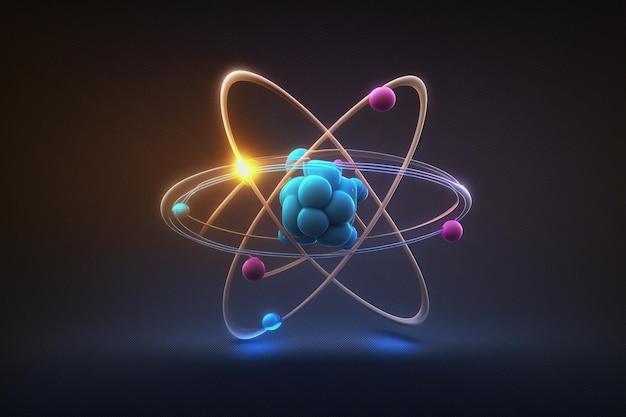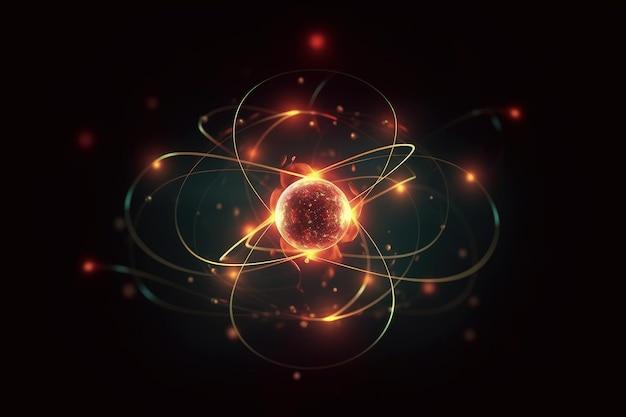Welcome to our blog, where we strive to provide you with valuable insights into the fascinating world of chemistry. Today, we are delving into the realm of mercury, a unique element that has intrigued scientists and curious minds for centuries.
Mercury, symbolized as Hg on the periodic table, is infamous for being a toxic substance. However, it is also a captivating element with a rich history and numerous applications in various industries. In this blog post, we will explore an intriguing question: how many protons and electrons are in Hg+?
By understanding the atomic structure of Hg+ and the role of protons and electrons, we can unlock the mysteries behind this charged ion. So, join us on this exciting journey as we delve into the world of chemistry and reveal the secrets of mercury. Let’s get started!

How many protons and electrons are in Hg+?
Mercury may not be the planet you first think of when you hear the word “Hg+,” but in the world of chemistry, it refers to a positively charged ion of the element Mercury. Now, you might be wondering, how many protons and electrons are in Hg+? Let’s dive into the atomic world and find out!
Protons: The Positive Players
Protons are the positively charged particles present within an atom’s nucleus. They play a crucial role in determining an element’s identity. In the case of Mercury, the chemical symbol Hg tells us that it has 80 protons. These little powerhouses love to hang out in the nucleus, attracting their electron buddies towards them.
Electrons: The Energetic Entourage
While protons are chilling in the nucleus, electrons are the lively particles buzzing around outside. They carry a negative charge that perfectly balances the positive charge of the protons. So, how many electrons does Hg+ have?
Let’s do some Atomic Math
When you see a plus sign (+) beside an elemental symbol, it means that the atom has lost some electrons and carries a positive charge. For Hg+, the positive charge tells us that it has lost one electron. But hold your scientific horses, we’re not done yet!
The Charge Balancing Act
In a neutral Hg atom, the number of protons and electrons are equal, both totaling 80. However, when an electron decides to explore the universe beyond the atom, the atom becomes positively charged. The loss of one electron from Hg leaves it with a total of 79 electrons.
So, in the case of Hg+, the positively charged Mercury ion, you can find 80 protons and 79 electrons. That missing electron must have gone on an electrifying adventure of its own!
Wrapping Up the Proton-Electron Dance
Exploring the world of subatomic particles can be electrifyingly fun! In the case of Hg+, the positively charged ion of Mercury, you’ll find 80 protons and 79 electrons. Protons hold down the fort in the nucleus, while electrons bring the lively energy to the atom’s surroundings. And now, armed with this knowledge, you can navigate the atomic landscape with confidence!

FAQ: How many protons and electrons are in Hg+?
In this FAQ-style section, we’ll address some common questions related to Hg+ and its presence in certain foods. From mercury content in beef to the number of protons and electrons in Hg+, we’ve got you covered!
Is beef high in mercury
If you’re concerned about mercury levels in your diet, rest assured that beef is generally not a significant source. Mercury tends to accumulate in aquatic environments, and while some fish may contain elevated levels, beef doesn’t have the same issue. So, grill those burgers and savor the juiciness without worrying about mercury!
How many protons and electrons are in Hg+
Ah, the delightful Hg+ ion! Let’s have some chemistry fun, shall we? Hg+ refers to an ion of mercury (symbol Hg) with a positive charge. Now, let’s count those protons and electrons. Mercury has an atomic number of 80, which means it has 80 protons. When Hg loses an electron and becomes Hg+, it retains the 80 protons but only has 79 electrons. Voilà! Now you know the atomic shenanigans of Hg+.
Is there mercury in rice
Rice is a staple in many cuisines, and it’s understandable to wonder if it contains any mercury. Generally, rice is not a significant source of mercury. However, certain types of rice may absorb small amounts of mercury from the environment, particularly when grown in regions with industrial pollution or near sources of mercury. Nonetheless, the levels are usually low and not a cause for major concern. So go ahead and enjoy that bowl of rice with peace of mind!
What is in rice that is bad for you
Speaking of rice, there’s a particular element you need to watch out for – arsenic. But before you panic, let’s put things into perspective. Arsenic is a naturally occurring element found in soil and water. In some cases, rice may absorb arsenic from the environment during its growth. However, the levels are usually low, and consuming rice in moderation poses minimal risk.
To further minimize any potential intake, you can opt for different varieties of rice, such as basmati or jasmine rice, which tend to have lower arsenic levels. Remember, it’s all about balance and variety in your diet!
We hope this FAQ-style section has shed some light on the questions swirling around Hg+ and its connection to beef, rice, protons, electrons, and potential risks. Remember, while Hg+ ions may be intriguing from a chemistry perspective, they pose no significant concern when it comes to dietary choices. So go ahead, make informed decisions, and enjoy your meals without mercury worries!
